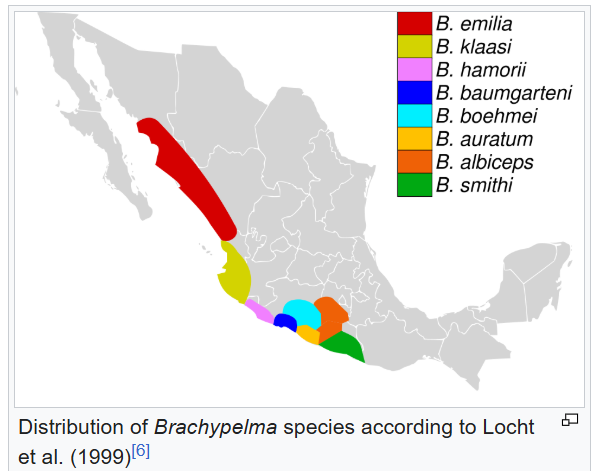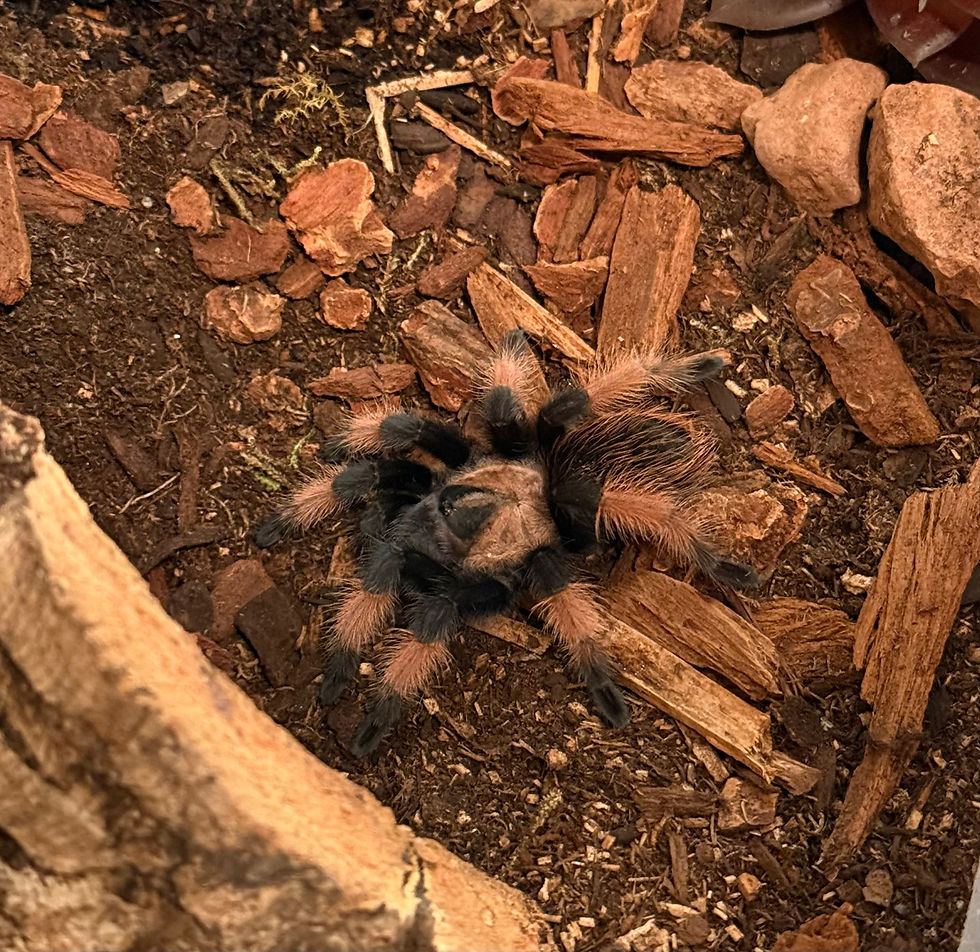Brachypelma
- Dominik Alexander
- Mar 9
- 2 min read
Updated: 19 hours ago
The Brachypelma genus is a mid-size tarantula, with bright orange and red colorations among many of its species. They can be found in Mexico. This is a very popular genus among hobbyists and because of this, many species have been captured and exported illegally from Mexico. Thus, all species are protected and regulated under Convention on International Trade of Endangered Species (CITES). These are generally slow growing species. The most recent and information publication on this genus was by Mendoza and Francke 2020.
There are currently 8 accepted Brachypelma species.


Genus and species: Brachypelma hamorii
Common name: Mexican Red Knee
Given name: Ash
This species is found on the west coast of central Mexico. Commonly misidentified as B. smithi.

Husbandry Notes:
Enclosure: 12x8x8
Sex: TBD
Life stage: Juvenille
Size: Approximately 4.25 in
Growth: Molted 4/20/25, gained a little size
Disposition: Typically on display after molt. Generally docile.
Eating habits: Decent but may not takedown immediately
Misc: Easy going with pleasant demeanor


Genus and species: Brachypelma emilia
Common name: Mexican Red Leg
Given name: Ember
This species resides in the foothills of the Sierra Madre Occidental in Sinaloa and Nayarit on the Pacific (west) side of central Mexico. This is considered a docile species, which is in high demand in the pet trade. As a result, it is considered threatened in the wild.
Husbandry Notes:
Enclosure: 8x8x8
Sex: TBD
Life stage: Juvenille
Size: Approximately 4 in
Growth: Has not molted, TBD
Disposition: Typically on display. Generally docile.
Eating habits: Decent but may not takedown immediately
Misc: Very slow growing. Pleasant demeanor


Genus and species: Brachypelma boehmei
Common name: Mexican Fireleg
Given name: Spark
This species resides on the west coast of central Mexico. It can be found in scrublands near rocks or fallen logs. As with other Brachypelma, this species is threatened in the wild.
Husbandry Notes:
Enclosure: 12x8x6
Sex: TBD
Life stage: Juvenille
Size: Approximately 4 in
Growth: Molted around May 1, 2025. Put on modest size.
Disposition: Generally docile and prefers its burrow.
Eating habits: Not an aggressive eater.
Misc: Typically resides in its burrow but does come out periodically. Has made an extensive burrow.

Genus and species: Brachypelma smithi
Common name: Mexican Redknee
Given name: Doris (Deceased)
This species resides on the west coast of southern Mexico.
This species is commonly confused with B. hamorii, leading to contentious debates on arachnid forums. B. smithi is found to the south of the Balsas River basin while the B. hamorii is found to the north. They can be found in hilly, deciduous, tropical forests amongst rocks and tree roots. B smithi is heavily threatened in the wild.
Husbandry Notes:
Enclosure:12x12x12
Sex: Female
Life stage: Adult
Size: Approximately 6 in
Growth: Full adult female. Growth not expected
Disposition: Generally docile and is always on display
Eating habits: Not an aggressive eater but consumes crickets periodically.
Misc: Doris is approximately 12 years old, and we rescued her from a reptile shop.



Comments